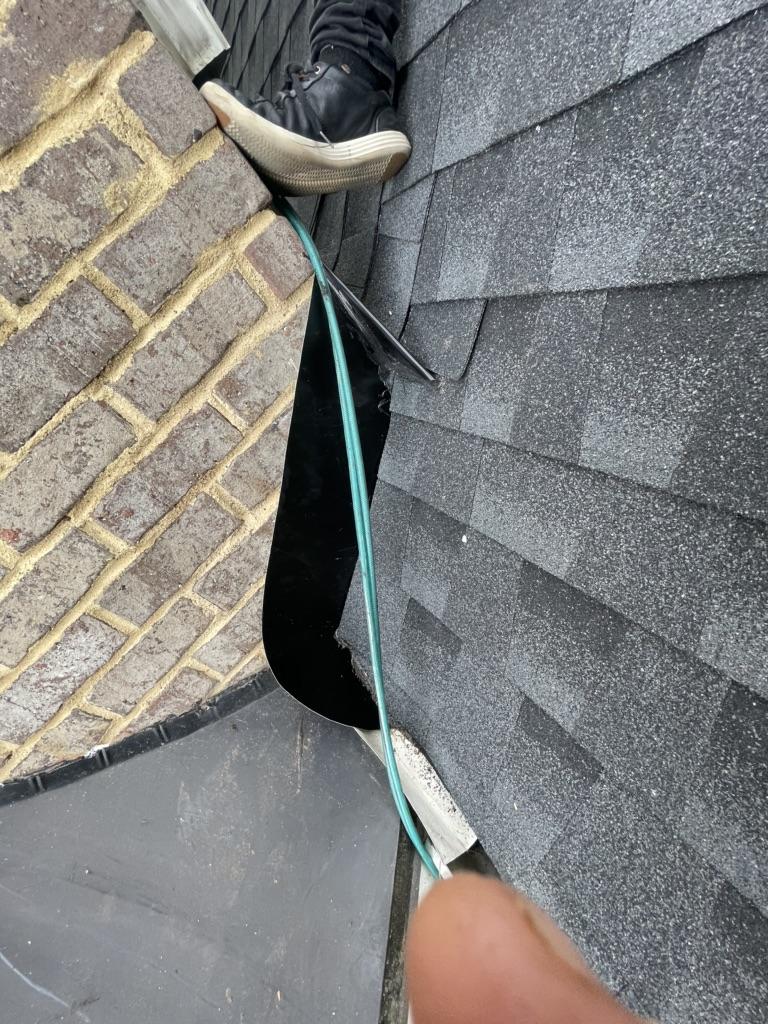Our Learning Center

What is Roof Flashing?
As experts in residential roofing, we at Infinity Roofing Contractors often get asked about the various components that make up a robust and effective roofing system. One crucial element that plays a significant role in protecting your home from water damage is roof flashing. In this blog post, we'll explore what roof flashing is, why it's essential for your residential roofing, and how it contributes to the overall integrity of your home's roof.
Understanding Roof Flashing
Roof flashing is a thin material, typically made of metal, that professional roofers install to direct water away from critical areas of the roof. In the context of residential roofing, flashing serves as a vital defense against water intrusion at the intersections and transitions of your roof. These areas are particularly vulnerable to leaks, making proper flashing installation a crucial aspect of any quality roofing job.
Types of Roof Flashing
In residential roofing, several types of flashing are used to protect different areas of the roof:
1. Chimney Flashing: This surrounds the base of the chimney where it meets the roof, preventing water from seeping into the gap between the chimney and roofing materials.
2. Valley Flashing: Installed in the valleys where two roof planes meet, this type of flashing guides water down the roof and into the gutters.
3. Step Flashing: Used where a roof plane meets a vertical wall, step flashing is installed in overlapping pieces to direct water down the roof instead of behind the siding.
4. Vent Pipe Flashing: This type surrounds roof penetrations like vent pipes, creating a watertight seal around these openings.
5. Drip Edge Flashing: Installed along the edges of the roof, drip edge flashing helps guide water into the gutters and away from the fascia and soffit.
Materials Used for Roof Flashing
When it comes to residential roofing, the choice of flashing material is crucial for longevity and effectiveness. Common materials include:
1. Aluminum: Lightweight, corrosion-resistant, and easy to form, aluminum is a popular choice for many residential roofing applications.
2. Copper: Known for its durability and aesthetic appeal, copper flashing is often used in high-end residential roofing projects.
3. Galvanized Steel: This affordable option offers good durability and is commonly used in many residential roofing installations.
4. Lead: While less common due to environmental concerns, lead is still used in some specialized flashing applications due to its malleability.
5. Rubber: Often used for vent pipe flashing, rubber provides flexibility and a tight seal around roof penetrations.
The Importance of Proper Flashing in Residential Roofing
Proper installation and maintenance of roof flashing are critical for several reasons:
1. Water Damage Prevention: The primary function of flashing in residential roofing is to prevent water from entering the home. Properly installed flashing directs water away from vulnerable areas, protecting your home's structure from moisture-related damage.
2. Extended Roof Lifespan: By preventing water intrusion, flashing helps maintain the integrity of your roofing materials, potentially extending the life of your entire residential roofing system.
3. Energy Efficiency: Effective flashing helps maintain your home's thermal envelope by preventing drafts and moisture buildup, which can impact your home's energy efficiency.
4. Mold and Mildew Prevention: By keeping water out, proper flashing helps prevent the growth of mold and mildew, which can pose health risks and cause structural damage.
5. Preserving Interior Finishes: Leaks caused by faulty flashing can damage interior ceilings, walls, and floors. Good flashing protects these interior finishes from water damage.
Signs of Flashing Problems in Residential Roofing
As a homeowner, it's important to be aware of potential flashing issues. Look out for these signs that may indicate problems with your roof flashing:
1. Water stains on interior walls or ceilings, especially near chimneys or walls
2. Peeling paint or wallpaper near roof intersections
3. Rusty or corroded flashing material
4. Loose or missing shingles around flashed areas
5. Visible gaps or separation between the flashing and the roof or walls
Maintenance and Inspection
Regular inspection and maintenance of your residential roofing, including the flashing, is crucial for preventing water damage and ensuring the longevity of your roof. We recommend having your roof professionally inspected at least once a year, or after severe weather events. During these inspections, a qualified roofer will:
1. Check for signs of wear or damage to the flashing
2. Ensure all flashing is properly sealed and secured
3. Look for any signs of water intrusion around flashed areas
4. Recommend repairs or replacements as needed
The Role of Professional Installation
While some DIY enthusiasts might be tempted to tackle flashing installation themselves, it's a job best left to professional residential roofing contractors. Proper flashing installation requires:
1. Extensive knowledge of roofing systems and water flow patterns
2. Understanding of local building codes and best practices
3. Skill in working with various flashing materials
4. Proper tools and safety equipment for roof work
At Infinity Roofing Contractors, our team of experienced professionals ensures that all aspects of your residential roofing, including flashing installation, are completed to the highest standards.
Roof flashing may not be the most visible part of your residential roofing system, but it plays a crucial role in protecting your home from water damage. Understanding the importance of proper flashing and maintaining it as part of your overall roof care can save you from costly repairs down the line.
If you're concerned about the state of your roof flashing or are considering a new residential roofing project, don't hesitate to reach out to us at Infinity Roofing Contractors. Our team of experts is ready to assess your roof, provide professional advice, and ensure that your home is protected with properly installed and maintained flashing. Remember, when it comes to residential roofing, paying attention to the details like flashing can make all the difference in the longevity and performance of your roof.
How can we help you today?
Our family is standing by to help yours.










